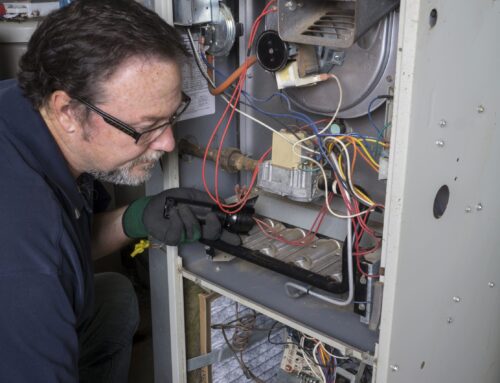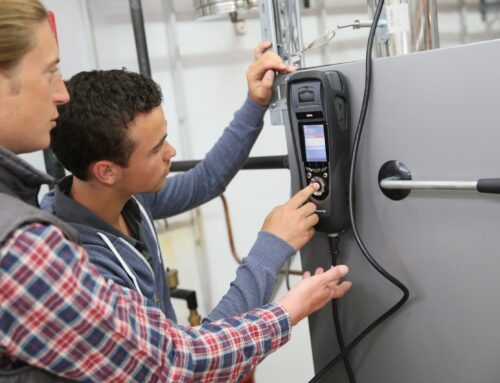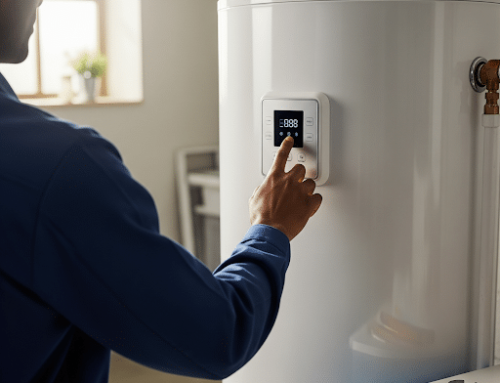How do you know how energy-efficient an air conditioner is? One way is to check the Energy Efficiency Rating (EER) and the Seasonal Energy Efficiency Ratio (SEER) ratings. Both EER and SEER are energy efficiency ratings; a higher rating means greater energy efficiency.
There are key differences in how EER and SEER are calculated; those ratings make SEER the more important rating for Winnipeg. EER is important, too, however, and you should realistically consider both ratings. Below, we explore what these ratings are, why they differ, and why you should prioritize SEER in more detail.
Don’t feel like reading the whole thing? The simple answer is that you should look for air conditioners with high SEER and EER ratings. Want to learn more about the science of energy-efficient air conditioning? Keep reading; you’re in for a treat:
Overview
- SEER is the most important rating for Winnipeg, and the preferred rating in most climates.
- EER calculates efficiency over an hour at a very hot outdoor temperature (35°C), and is thus less useful in Winnipeg.
- A higher SEER and a higher EER rating are both useful in all climates, including Winnipeg.
| Climate | EER | SEER |
| Very hot and dry (i.e. Phoenix) | ✅Very useful | ✅Very useful |
| Mild (i.e. Vancouver) | ☑️Less important | ✅Very useful |
| Hot and humid (i.e. Miami) | ✅Very useful | ✅Very useful |
| Warm, shorter summers (i.e. Winnipeg) | ☑️Less important | ✅Very useful |
What Is SEER?
SEER stands for Seasonal Energy Efficiency Ratio; the goal of SEER is to calculate the cooling efficiency of an air conditioner over the course of an entire cooling season. The formula for calculating SEER is:
Amount of cooling provided over the course of a season (in BTUs/season)/total energy used during a season (in watt hours/season).
The SEER rating is calculated based on a climate with an average outdoor summer temperature of 28°C. In Winnipeg, the daily maximum temperature in July and August is around 25°C to 26°C; this means that the SEER rating is overestimating the amount of cooling that will be needed (and, thus, that your air conditioner will typically consume fewer watt hours than what has been calculated).
What Is EER?
EER stands for Energy Efficiency Ratio; unlike SEER, EER calculates the cooling efficiency of a unit at a specific temperature (usually 35°C outside and 26.7°C inside with a relative humidity of 50%). The formula to calculate EER is:
Total cooling capacity (in BTUs)/total energy used (in watts).
Rather than telling you how much energy your air conditioner will use throughout the cooling season, EER tells you how much energy your air conditioner will use over the course of an hour on a very hot day.
SEER Vs. EER: Key Differences
The key differences between SEER and EER are twofold:
- The outdoor temperatures that are used to calculate the ratings
- The length of time that is used to calculate the ratings
This means that SEER is better at calculating how efficient a unit will be over the course of an entire cooling season, while EER is better at calculating how efficient a unit will be on a very hot day. Both ratings are relevant, but SEER is often preferred over EER because most people don’t use their air conditioner for a single day—they use it all summer.
Benefits Of High SEER And EER Ratings
Both high SEER and high EER ratings mean the same thing: Your air conditioner is more energy-efficient. Energy efficiency comes with a lot of benefits, including:
- Lower energy bills
- A lower carbon footprint
- A longer lifespan for your air conditioner
- Potential rebates
- Less chance of overloading breakers
Notably, SEER and EER ratings are calculated on new units. As your unit ages, parts will begin to wear out; this means your air conditioner will have to work harder to cool your home. Regular maintenance, like changing or cleaning your filters, can help maintain your unit’s SEER and EER ratings for longer.
What Matters Most In Winnipeg?
In Winnipeg, the SEER rating is more important than the EER rating. The main reasons for this are that:
- Our daily highs almost never reach 35°C.
- SEER is generally accepted as the more comprehensive energy efficiency rating, even outside of Winnipeg, because it covers energy consumption for the entire cooling season.
As we mentioned above, SEER is typically calculated at an average temperature of 28°C. Even that is above the typical highs we see in our summers, but it’s still a more accurate measure over time than EER. A consequence of this difference is that the energy savings you will see may be a little different than what’s predicted; the science is not exact.
Despite their differences, a higher EER and a higher SEER rating will both lead to energy savings; when looking for an energy-efficient air conditioning unit, you should consider both ratings.
Choosing The Right AC For Winnipeg Homes
Prioritize SEER, But Don’t Ignore EER
SEER may be the king of energy efficiency ratings for air conditioners, but EER is important, too. We’ve all seen 35°C+ weather in July, and during a heat wave, those temperatures can hang around for days at a time. A high EER rating will help you lower energy consumption at seasonal peaks.
Look For An ENERGY STAR Certification
Looking at the SEER rating and EER rating of a unit is a great way to evaluate how efficient a unit is; in Winnipeg, a SEER rating of 15-17 is usually great for efficiency, and more than enough to handle our summers. Another excellent way to choose a good unit is to look for an ENERGY STAR certification; ENERGY STAR units are always energy-efficient; the criteria to receive the certification are governed by Natural Resources Canada.
Factor In Local Rebates
Governments want to incentivize homeowners to purchase energy-efficient air conditioners because:
- Energy-efficient units reduce carbon emissions, helping to combat climate change.
- Energy-efficient units reduce power consumption; Manitoba Hydro can then sell the unspent electricity to higher-paying customers.
To find local rebates on air conditioners (and heat pumps), we recommend visiting the Efficiency Manitoba website.
Final Thoughts
We’ve covered a lot of ground in this article, but there are a few other things that you should know about before we go:
- A new measure of energy consumption has recently been introduced: The Combined Energy Efficiency Ratio (CEER). This measure also calculates how much energy your unit uses while in standby mode; you may see it on more units moving forward.
- The heating equivalent to SEER is the heating seasonal performance factor (HSPF), which calculates the heating efficiency of a unit over an entire heating season. You will see both HSPF and SEER on heat pumps, as they are used for both heating and cooling.
- A properly sized unit is an absolute must for your SEER and EER ratings to be accurate; when your unit is undersized or oversized, the efficiency ratings are effectively meaningless.
Looking for an energy-efficient air conditioner for your home? Call SWK Mechanical today. We’ll help you find the perfect unit to keep you cool all summer, all while lowering the cost of your energy bills.









